The post Across the Indo-Pacific, from Alaska to Japan: Meet Agapito (Pete) Diaz appeared first on Blog.
]]>Working in a region known for its “Very High Hazard” seismic zone and marked by extreme tropical weather — including typhoons — Pete is highly skilled in effectively addressing the complexities of remote Pacific projects. From managing long lead times for materials and equipment to overcoming labor shortages driven by the ongoing military construction program to relocate U.S. Marines to Guam, Pete’s expertise continues to drive impactful projects in the Pacific region and his award-winning leadership is a cornerstone of AECOM’s operations in Guam.
Tell us about what inspired you to join the industry.
Growing up in Guam, the beaches and reefs were an integral part of my life. I have vivid memories of swimming and playing in areas full of coral and sea life, and in other areas that were impacted by pollution, yet we continued to visit and swim because being in the water was such a fundamental aspect of island life. Those experiences left a lasting impression on me. I often thought about the impact of pollution and how it could be addressed to preserve our environment for future generations. This reflection sparked my interest in finding ways to improve environmental conditions, particularly through engineering.
My focus naturally gravitated toward water and wastewater treatment — areas where I saw an opportunity to make a tangible difference. My father, a civil engineer specializing in roadway and stormwater management, also influenced my path. While I initially thought our interests diverged — his were in infrastructure and mine were in environmental preservation — I later realized how interconnected these fields are. Civil engineering, in all its facets, plays a critical role in protecting and enhancing our environment.
This realization solidified my commitment to the engineering field, where I could combine my passion for environmental stewardship with technical expertise to create meaningful change. It’s a journey that continues to inspire me every day.
What is your favorite AECOM project that you’ve worked on and why?
One of my favorite projects has been working with the U.S. Navy and U.S. Marine Corps on their drinking water compliance programs in light of legally enforceable drinking water standards in various locations, including Japan, Singapore, and Diego Garcia. These projects have been particularly rewarding because they combine technical challenges with the opportunity to travel and experience different cultures. Each location presents unique requirements for compliance, as these bases operate outside the U.S. and must comply with the Navy’s Overseas Drinking Water Program, modeled after USEPA national policy and state regulatory programs.
The complexity of addressing per- and polyfluoroalkyl substances (PFAS) to ensure that service members and their families have access to high quality drinking water, whether it’s produced locally or sourced from a host nation, is both challenging and fulfilling. It’s about bridging the gap between local practices and U.S. standards to protect human health. These projects have allowed me to apply my expertise in water systems while also gaining insight into diverse operational environments.
Traveling for these projects has been an incredible experience, taking me to places like Guam, Hawaii, Japan, and Diego Garcia. It’s inspiring to see how our work positively impacts communities and supports the well-being of those serving abroad. The blend of technical problem solving and cultural exploration makes these projects some of the most meaningful of my career.
Share a piece of career advice.
My favorite piece of career advice came from my dad. While some parents push their kids to strive for a doctorate, my dad would often say, “Be P.H.D.” He meant, Be Poor, Hungry, and Driven. Not to be poor financially, but to always remember to be humble and remember where we came from. Not to be hungry in terms of food, but to have a strong desire for improvement and success. And to always be driven, to accomplish new goals and strive for bigger and better things.
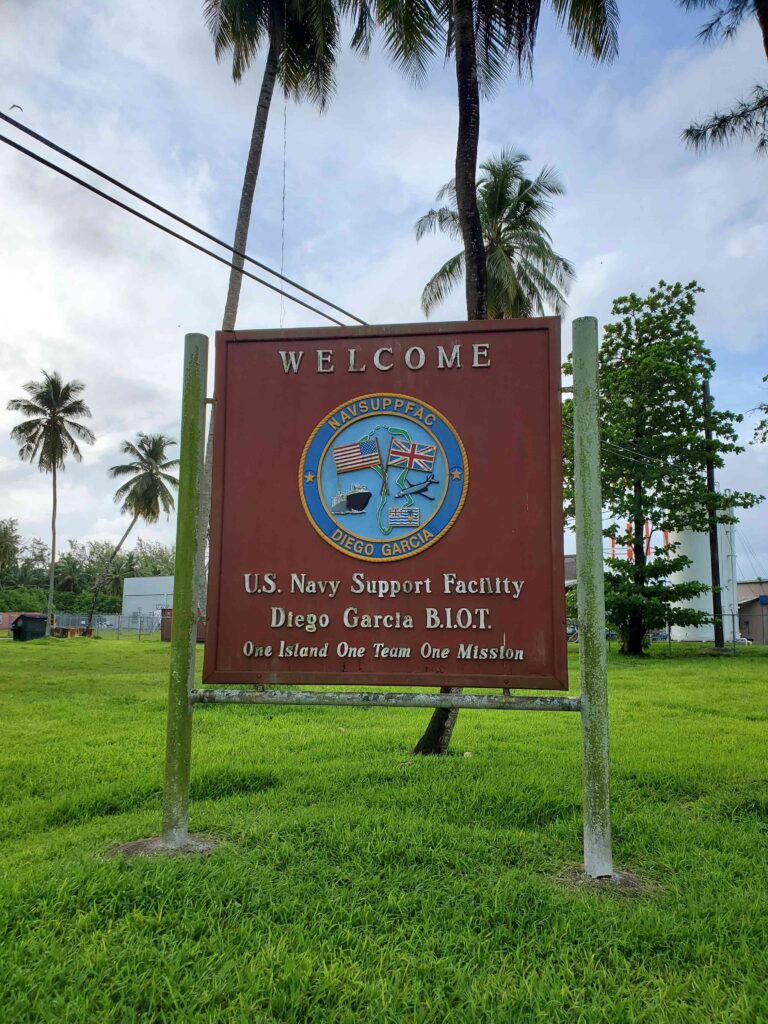
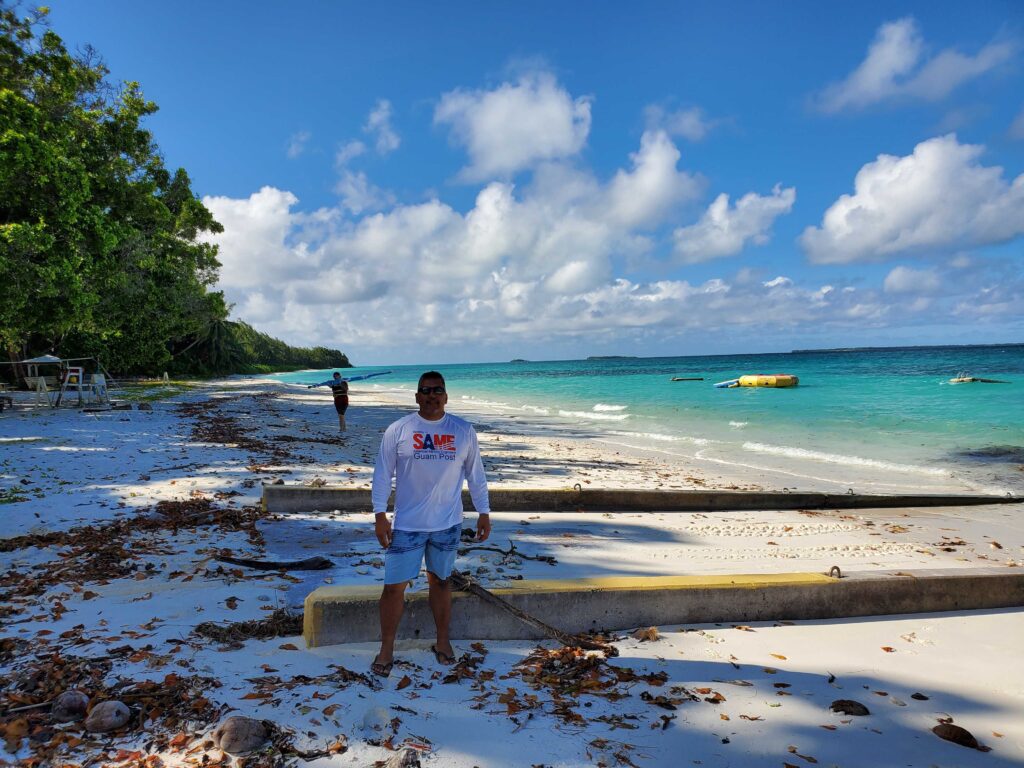
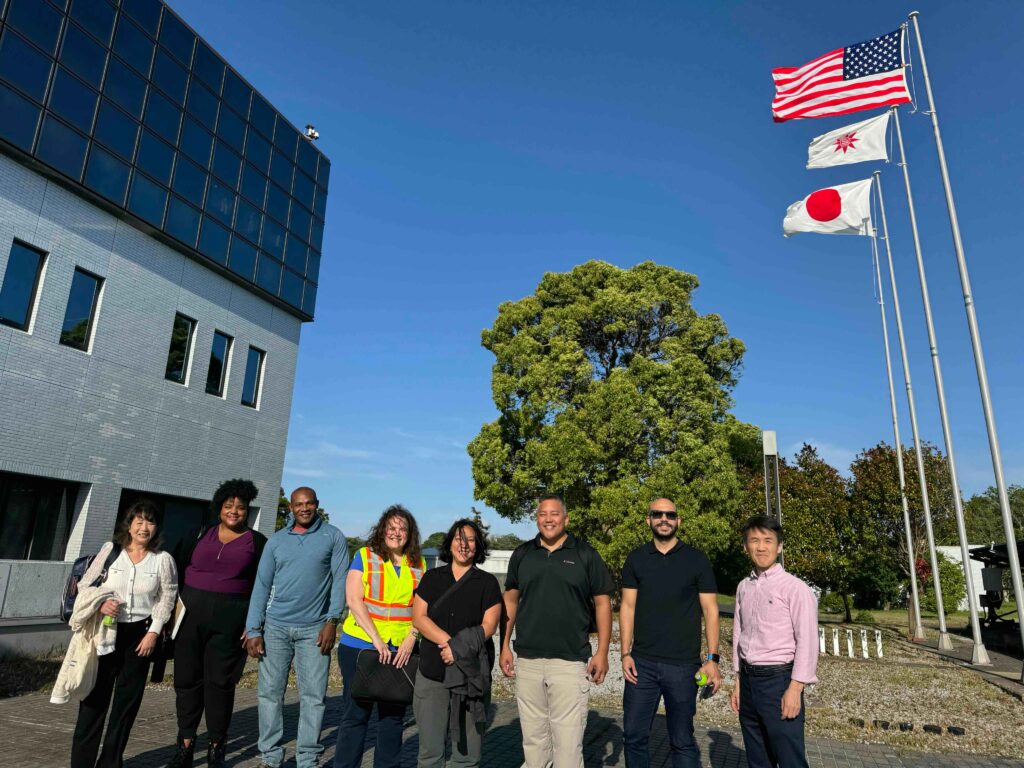
The post Across the Indo-Pacific, from Alaska to Japan: Meet Agapito (Pete) Diaz appeared first on Blog.
]]>The post In conversation with Yvonne Bilshausen at FTE Global appeared first on Blog.
]]>Can you briefly introduce AECOM and explain how it supports and integrates with the air transport ecosystem?
AECOM is at the forefront of airport infrastructure innovation. We partner with airports, airlines, and other business partners to design iconic, human-centric terminals and concourses that transform how guests experience air travel. Our goal is to create spaces that elevate the travel experience while supporting the operational and commercial success of our partners.
What inspired AECOM to become a Platinum Sponsor of FTE Global 2025, and what are your strategic goals for this participation?
Our decision was driven by our commitment to fostering meaningful connections and driving transformative change within the aviation industry. FTE Global provides a unique platform to engage with innovators, exchange insights, and collaborate on solutions that will shape the next generation of air travel. We’re aiming to not only share our expertise but also listen, learn, and strengthen partnerships that advance sustainable, passenger-focused, and technology-enabled airport solutions worldwide.
You are speaking in a conference session at FTE Global focused on ‘Understanding the trends, and factors, that will impact passenger journeys & future expansion strategies of airports and airlines. What can attendees expect from the session, and can you give a preview of the key messages will you share?
I’m really looking forward to exploring how airports and airlines can anticipate the shifting needs of travelers and industry stakeholders while ensuring infrastructure remains resilient, adaptable, and future-ready. Attendees can expect practical insights and forward-looking strategies that combine innovation with real-world implementation:
- Designing for tomorrow’s journey
- Innovation meets infrastructure
- Passenger- and workforce-centric design
- Strategic expansion and refurbishment in an evolving industry
- Integrating technology and experience
In what ways is AECOM approaching airport design and planning to accommodate digital, sustainability and human expectations of new terminals of the future?
- Elevating passenger experience: Designing airports that prioritize seamless navigation, comfort, and efficiency through clear signage, intuitive layouts, and amenities that meet diverse traveler needs.
- Prioritizing efficiency and functionality: Creating terminals that facilitate effortless passenger flow, streamlined security, and seamless baggage handling, ensuring airports operate at peak performance while enhancing the travel experience.
- Commitment to sustainability: Integrating energy-efficient systems, eco-friendly materials, and innovative green strategies that minimize environmental impact and elevate the overall quality of the built environment.
- Emphasizing flexibility and scalability: Developing visionary designs that can adapt to passenger growth and evolving technologies, ensuring they can effortlessly accommodate increasing passenger volumes and meet the ever-evolving demands of modern travel.
- Embracing technological integration: Seamlessly weaving technologies into every aspect of the travel experience, from streamlined check-in and enhanced security processes to dynamic passenger information systems that keep guests informed and engaged.
- Innovative design solutions: Delivering iconic, high-ROI designs that not only captivate the eye but also elevate terminal functionality, blending stunning aesthetics with practical features to redefine the commercial air travel experience.
- Interdisciplinary collaboration: Leveraging expertise across architecture, engineering, planning, and operations to create integrated, future-ready solutions that exceed technical and safety standards.
- Guest-Centric Features: Prioritizing diverse passenger needs — such as inviting dwell areas, gourmet dining options, and vibrant retail spaces — to elevate the travel experience and significantly enhance guest satisfaction, turning airports into enjoyable destinations.
- Cultural Relevance: Infusing local cultural elements into the terminal design to create a rich, authentic identity that resonates with passengers, transforming their journey into a meaningful experience that reflects the unique spirit of the community.
What key airport projects is AECOM currently working on that you can share details of?
We’re proud to be delivering some of the most ambitious and transformative airport projects around the world. Each project reflects our commitment to enhancing passenger experience, improving operational efficiency, and embedding sustainability into the future of air travel. Our teams are partnering with airports and airlines to design and deliver facilities that are resilient, adaptable, and ready to meet the evolving demands of the aviation industry.
- Boston Logan International Airport (BOS)
- The revitalization of Terminal E added 320,000 square feet of new gate infrastructure, featuring a distinctive red roof inspired by Boston’s color palette, while integrating advanced operational efficiencies and new ticketing, baggage handling, and U.S. Customs facilities.
- John F. Kennedy International Airport (JFK)
- AECOM Hunt is partnering in the $4.2 billion redevelopment of Terminal 6 at JFK, which includes a 1.2 million square foot terminal, expanded gate capacity, new amenities, and a commitment to exceeding 30 percent utilization of minority- and women-owned businesses, expected to be completed by 2028.
- Baltimore/Washington International Thurgood Marshall Airport (BWI).
- Terminal A/B Connector and Baggage Handling System. Here we are contributing to a $332 million upgrade at BWI to enhance passenger experience and operational efficiency, including direct connectivity between Concourses A and B, expanded baggage handling, and more hold room, food, and retail options.
- Seattle-Tacoma International Airport’s (SEA)
- We’re proud to be modernizing Seattle-Tacoma International Airport’s S Concourse in collaboration with HOK, transforming the 350,000-square-foot space into a more efficient and sustainable facility by reconfiguring concourse areas, redeveloping former inspection spaces for retail and dining, and expanding premium lounges. This project, expected to be completed by 2031, underscores our commitment to enhancing travel experiences and aligns with the Port of Seattle’s sustainability goals.
- Orlando International Airport (MCO)
- At Orlando International Airport’s Terminal C, we’re providing project and program management services for multiple initiatives, including supporting infrastructure enhancements, wayfinding updates, and landscaping improvements to streamline operations and enhance the guest experience amid extensive expansion efforts.
- Melbourne International Airport (MEL)
- At MEL, we’re delivering multiple projects including the expansion of Virgin Domestic Arrivals and Reclaim in T3, upgrades to baggage screening, and the redevelopment of the Arrivals Duty-Free retail space.
- San Diego International Airport (SAN)
- Here we’re delivering comprehensive program, project, and construction management services for NT1, the airport’s largest project, which will feature a new on-airport entrance road for quicker access, as well as bicycle lanes and a pedestrian path connecting to San Diego’s communities, while also reserving space for a future direct link to the region’s public transit network.
- Dallas – Ft. Worth International Airport (DFW)
- As the leader of the Airfield Management Partners joint venture, we’re providing comprehensive planning, programming, design, procurement, and construction management services for all phases of airside project development, including infrastructure rehabilitation and enhancements for runways, taxiways, utilities, security, signage, support facilities, and airport transit systems.
What are the major trends you are noticing in terms of airport design and planning and how is AECOM influencing those trends?
AECOM’s Aviation teams are setting trends, not following them. By combining innovative design thinking with advanced digital technology, we transform our clients’ most pressing challenges into opportunities for smarter, more resilient, and passenger-focused solutions. Some of the challenges our aviation clients are facing include:
- Navigating complex logistics: Coordinating passenger flow, optimizing security checkpoints, and ensuring reliable baggage handling to keep airports operating efficiently.
- Ensuring regulatory compliance: Meeting rigorous security, safety, and accessibility standards across every phase of design and operation.
- Balancing aesthetics and function: Designing terminals that are both visually inspiring and highly efficient, creating spaces that perform as well as they look.
- Managing scale and scope: Addressing the complexity of large-scale projects through careful planning, collaboration, and coordination across multiple disciplines.
- Overcoming budget/funding constraints: Delivering high-quality and functional designs within budget limitations.
- Future-proofing designs: Embedding flexibility and foresight to accommodate future growth, evolving passenger expectations, and emerging technologies.
The ultimate showcase of innovative solutions for complex challenges is the remarkable (BOS) Boston Logan Terminal E Expansion. As AECOM’s Global Head of Aviation Architecture and Engineering, I am beyond thrilled to share my admiration for the inspirational planning, architecture, engineering, and construction of BOS Terminal E. This incredible project is a true testament to innovation, creativity, and sustainability in aviation infrastructure. Designed with a striking red roof that blends bold aesthetics with functional purpose, the terminal demonstrates how architecture can be both iconic and highly practical.
Led by Terry Rookard and Jonathan Rushmore, a team of highly talented AECOM architects integrated cutting-edge technology with timeless design principles, creating a structure that is both visually striking and highly practical. Walking through Terminal E, you will be inspired by the seamless harmony between form and function. It’s a space that not only meets but exceeds expectations, providing an environment that is calm, comfortable, and efficient. we’re proud to help set that direction, turning ambitious visions into lasting infrastructure that will serve communities and travelers for decades to come.
What do you value most about participating in FTE events, and what are you particularly excited about at this year’s FTE Global?
I value the opportunity to connect with industry leaders and exchange innovative ideas that shape the future of aviation. This year, I’m particularly excited to explore how new technologies and guest-centric design are being applied to create smarter, more seamless airport experiences.
How can attendees best connect and engage with you and your team during the event, and is there a message you’d like to share with them in advance?
We’d love to connect during sessions or ahead of time to discuss the future of airport design. Our team is excited to share insights on creating human-centric, innovative infrastructure that elevates every journey. Let’s collaborate to shape airport experiences that inspire and delight.
The post In conversation with Yvonne Bilshausen at FTE Global appeared first on Blog.
]]>The post The importance of coastal resilience: Meet Chris Levitz appeared first on Blog.
]]>A civil engineer by training, he focuses on aligning community development goals with ecological and long-term climate objectives, designing integrated strategies that blend green and gray infrastructure to build safer, more adaptable communities. He has been instrumental in building and leading our coastal resilience team, bringing together engineers, scientists, and planners to tackle complex challenges and expand the group’s impact across the region.
Chris has led major projects for the Texas General Land Office, the Federal Emergency Management Agency (FEMA), and the U.S. Army Corps of Engineers (USACE), including serving as engineering project manager for the Texas Coastal Resiliency Master Plan since its inception. From storm surge protection and fast-tracked design following Hurricane Ike in Houston-Galveston to stakeholder engagement across coastal Texas, he brings a collaborative, forward-thinking approach grounded in technical excellence and a deep commitment to community resilience.
Tell us about what inspired you to work in coastal resilience.
I became a civil engineer because I wanted to work on projects that could directly benefit both the environment and the community. I’ve always been drawn to the idea of blending the power of our natural ecosystems with the practical side of engineering, and civil engineering felt like the right fit.
When I began my career, my work focused primarily on flood risk, with a particular emphasis on community resilience to flooding. Over time, I’ve been able to integrate that with my original interest in environmental stewardship. Looking back, that’s where my passion truly started. It’s been rewarding to bring those elements together under one professional umbrella, rather than specializing in just one area. I’ve always held onto the goal of doing work that helps comprehensively when possible, and that’s ultimately shaped the path of my career.
What is your favorite AECOM project that you’ve worked on and why?
My favorite project has been the Texas Coastal Resiliency Master Plan, which has also been a foundational project for our team. We worked with the state on the first plan iteration released in 2017, then updated it in 2019 and 2023, and we’re now working on the 2028 version. It’s been a unique and rewarding opportunity, as we’ve been able to support the Texas General Land Office on this plan since its inception. The plan includes over 367 miles of coast and 3,300 miles of bays and estuaries, addressing challenges such as storm surge, sea level rise, habitat degradation, and coastal erosion. It emphasizes nature- and infrastructure-based solutions, integrating innovative methodologies like living shorelines and sediment management. The plan has resulted in the funding of hundreds of millions of dollars for coastal resilience projects along the Texas coast. I like to think that’s because we’ve put a lot of heart and effort into it, making it representative of the coastal stakeholders and ecosystems of Texas.
This work demonstrates our strong commitment to the Texas coast, its communities, ecosystems, and the complex challenges they encounter. In partnership with the General Land Office, we continuously listen to and learn from the knowledge and experiences of stakeholders, professionals, and academic experts across the entire Texas coast. Through this collaboration, we have created a set of resilient design guides for stakeholder use that translate the plan components into actionable steps.
Through these connections, we find solutions that balance environmental needs with community resilience, addressing current issues while anticipating how challenges will evolve over time. It has been an incredible chance to lead and help shape the long-term vision for the Texas coast. It’s an ongoing opportunity to better serve the state, its communities, habitats, and ecosystems, improving resilience and making the coast as safe, accessible, and sustainable as possible – a coast that many generations can enjoy.
Why is it important to take a proactive approach to coastal resilience?
Unfortunately, it feels like we have a new flood or hurricane-related disaster far too frequently these days. It often seems like we’re stuck in this constant cycle of responding to the latest disaster. Our resilience practice is working to shift that mindset from reactive to proactive. Instead of waiting for worst-case scenarios to happen, many of which are unprecedented and unexpected, we want to think ahead.
Our approach to resilience considers both what has happened and what hasn’t happened yet. How do we develop solutions — whether engineered, nature-based, gray infrastructure, green infrastructure, or a mix — that go beyond traditional methods? It’s about building on our previous knowledge but also pushing the envelope to be more innovative and thoughtful. Recently, we assisted NASA with these specific considerations by working with them at the Kennedy Space Center to assess opportunities for enhancing site resilience against coastal surge and erosion. We aimed to do this by leveraging the natural beach and dune system along the Atlantic shoreline and living shoreline on the estuarine shores.
A big part of this is recognizing that we can’t just build stronger infrastructure. We also need to educate and inform communities, sharing knowledge and helping residents become responsible stewards of their environment — whether that’s the coast, river systems, or flood-prone areas. Fostering that awareness and centering it in a community’s culture is key. As an example, we partnered with FEMA and The Nature Conservancy in Puerto Rico to develop job aids for local communities, providing a technical foundation to assist them in transitioning from traditional infrastructure designs to natural and nature-based solutions along sandy shorelines, riverine streambanks, and urban stormwater systems.
Ultimately, the goal is to reduce the need to respond repeatedly to disasters by implementing measures beforehand. That way, when events do happen, their negative impacts are mitigated because proactive steps were taken. That’s the heart of what we’re trying to do with resilience.
Tell us a story of how your work positively impacted the community.
As an individual member of the public, a lot of the work our team does tends to be expected — or even taken for granted. People don’t expect heavy rainfall to disrupt their ability to get to work on any given day, much less cause loss of life. Often, we’re fortunate enough to expect those kinds of events won’t happen, or at least that they’ll remain extreme exceptions.
What we try to do is make resilience and hazard mitigation fundamental — something that happens quietly behind the scenes. In an ideal world, much of what we do goes unnoticed by the public because it’s so reliable. At the same time, we want people to become more knowledgeable and aware of these issues through education and outreach, whether it’s working with schools, running public campaigns, or providing resources.
It’s about cutting through some of the bigger challenges in society, like politics or funding limitations, and focusing on what matters most: projects that truly benefit the public. What’s critical to us is not just the technical excellence of our work, but also making positive impacts and changing perspectives. That way, awareness of resilience becomes less of an exception and more a part of how communities understand and prepare for their environment.
Share a piece of career advice.
First, as a young engineer, scientist, planner, or any other professional, it’s essential to diversify. Find opportunities that allow you to work in different spaces, take on different types of projects, and learn new skills. That versatility benefits you by keeping your career from becoming repetitive and provides a broader range of exposure to unique projects.
Second, take initiative. Do what’s in front of you, but don’t be afraid to express interest in other areas. If you hear about something that excites you, reach out — whether it’s within your group or another one — and have a conversation to learn more. Authentic interest is what makes a real difference. We want to work with people who are genuinely invested in the work, because that’s when you do your best work.
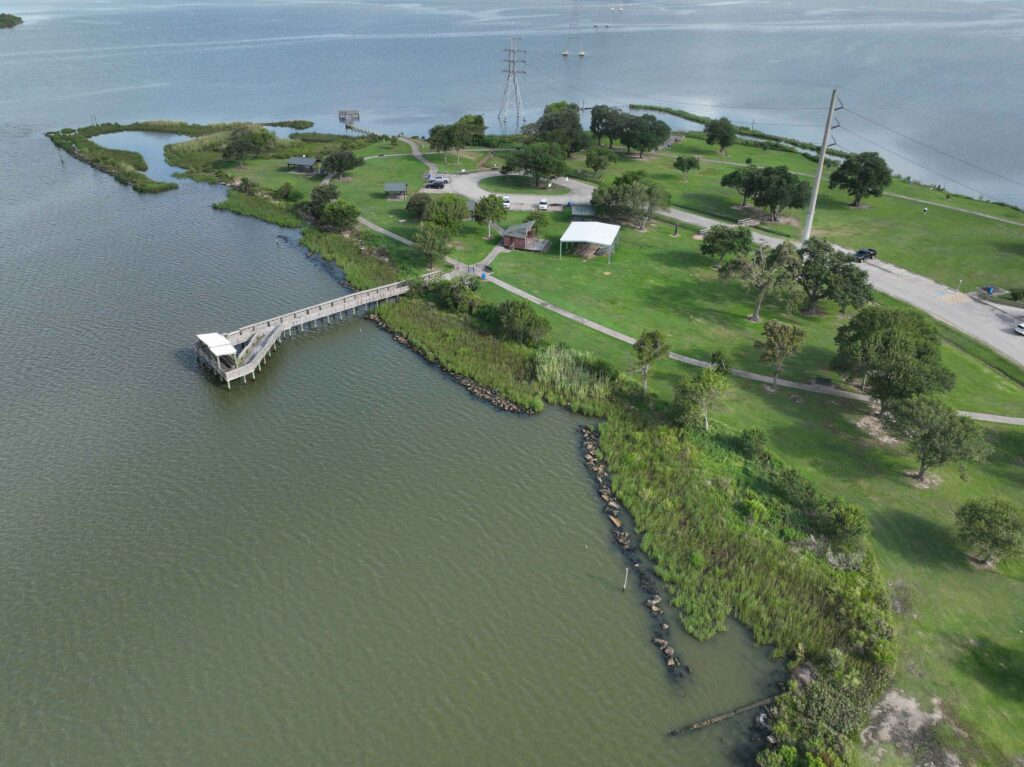
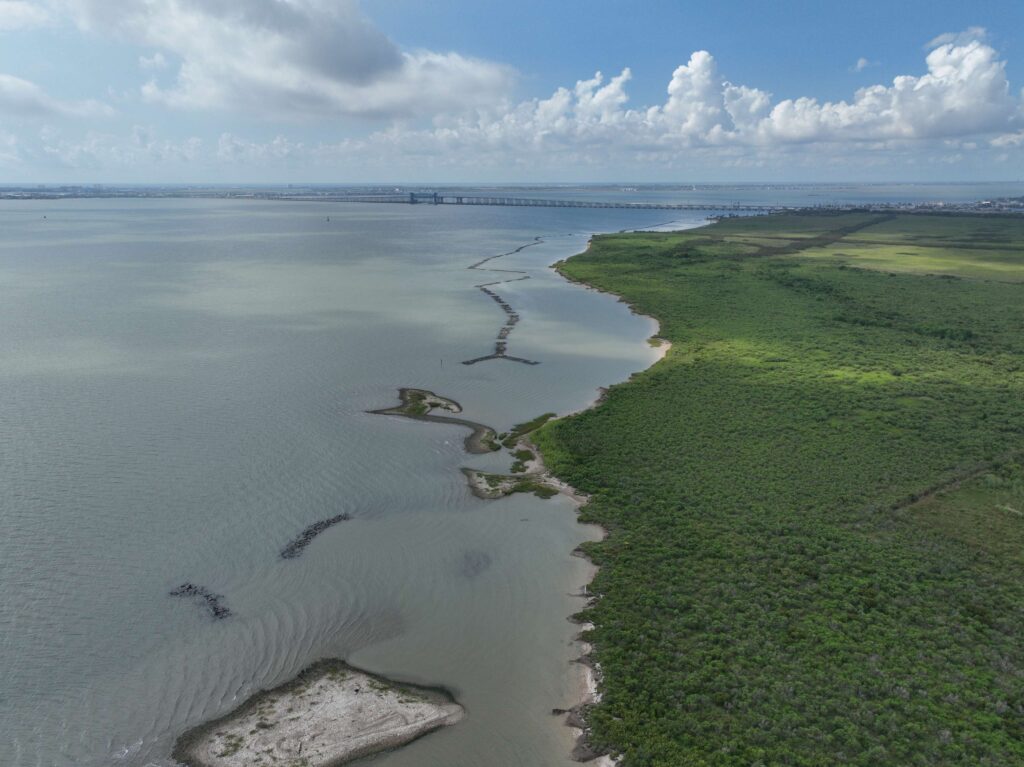
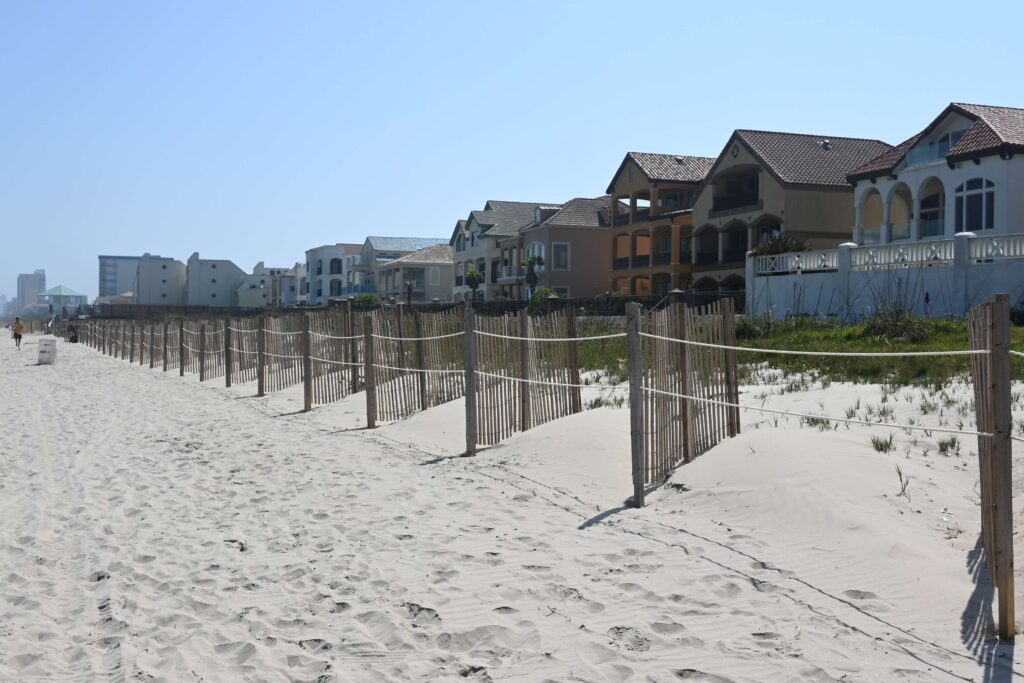
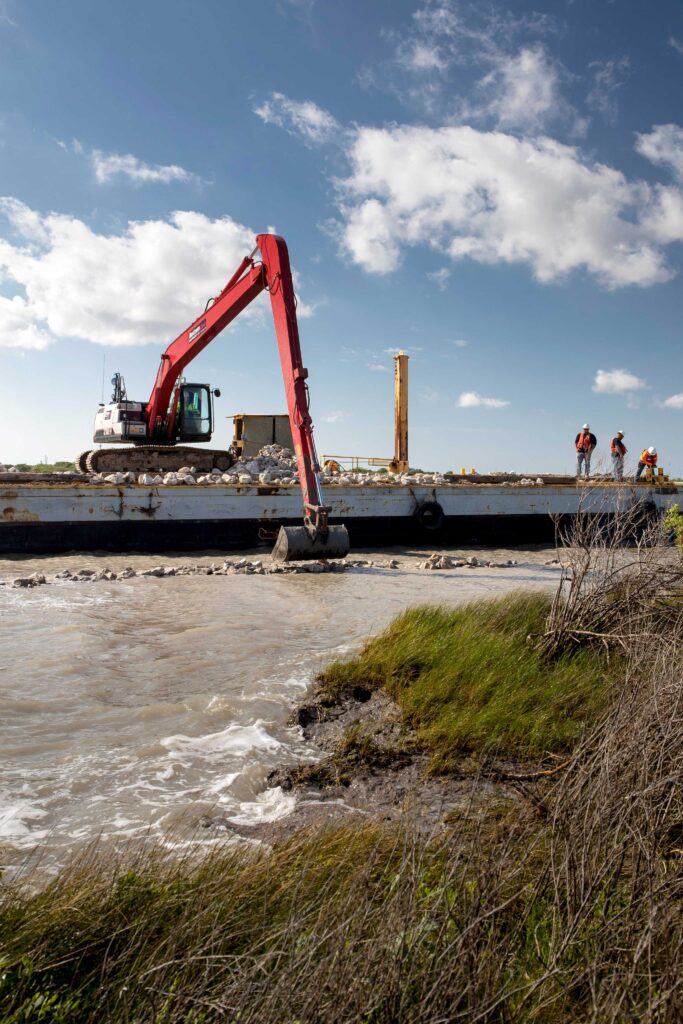
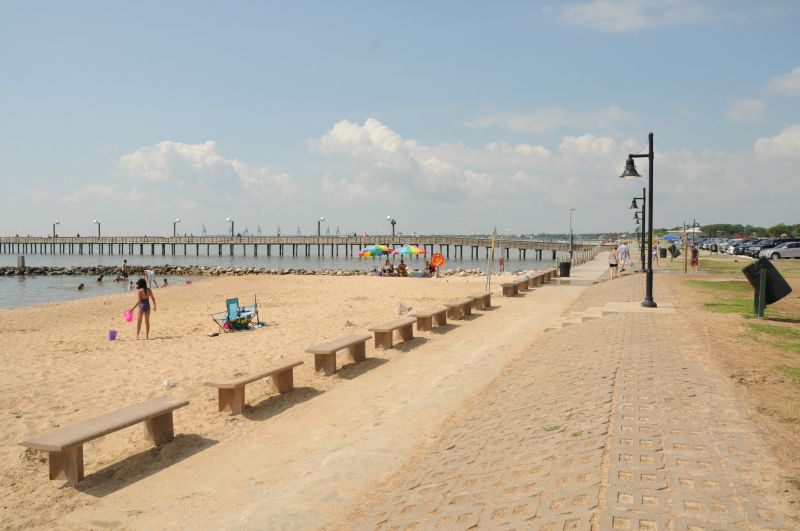
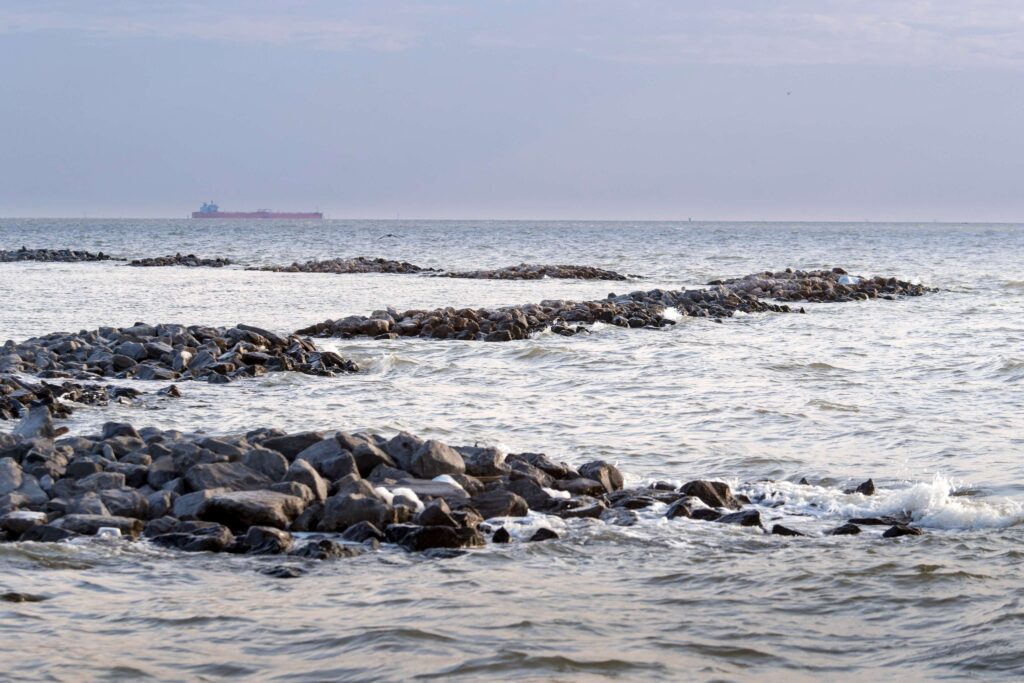
The post The importance of coastal resilience: Meet Chris Levitz appeared first on Blog.
]]>The post People Spotlight: Meet Ahmad Bitar appeared first on Blog.
]]>Growing up in Palestine’s West Bank with a civil engineer father, Ahmad saw how strong water infrastructure can make a real difference for communities. That early experience sparked his passion for sustainability and water reuse. After earning his engineering degree in the West Bank and a master’s degree from Utah State University, Ahmad made Charlotte home. Motivated by the potential for smart water use — including the One Water concept in which all water sources are managed as equally valuable with an eye on resilience and reliability — Ahmad works on projects like water reclamation networks and biosolids dewatering systems to create lasting, positive impacts.
What inspired you to join the industry?
It all started with my dad, a civil engineer working on water and wastewater projects in Nablus, a city in the West Bank. Growing up in the 1990s, we would be walking around the city and I would watch as people came up to thank him. I’d ask why, and he’d say, “We installed a new water line,” or “We built a well to improve access to clean water.” Seeing firsthand how infrastructure could change lives inspired me early on.
It all started with my dad, a civil engineer working on water and wastewater projects in Nablus, a city in the West Bank. Growing up in the 1990s, we would be walking around the city and I would watch as people came up to thank him. I’d ask why, and he’d say, “We installed a new water line,” or “We built a well to improve access to clean water.” Seeing firsthand how infrastructure could change lives inspired me early on.
In high school, I gravitated toward science projects about wastewater. For my ninth grade science project, I explored different treatment processes. Naturally, I chose civil engineering for my undergraduate degree, with a focus on water and wastewater systems.
During my senior year, professors encouraged me to consider graduate school at Utah State University. I was accepted and joined the Utah Water Research Lab, which focuses on hydraulic modeling and environmental wastewater treatment. That’s also when I got involved with the Water Environment Federation (WEF). I joined the student chapter, competed in the state’s annual design competition twice, and represented Utah at WEFTEC both years. That experience sparked my deeper interest in biosolids and introduced me to the professional side of the water industry.
In 2018, I moved to Charlotte where I started with pipeline projects, odor control and biogas systems. I gradually took on more responsibility — running calculations, conducting field work, and contributing to design efforts. When AECOM reached out, I was drawn to the opportunity to work with a tight-knit local team backed by a global firm’s resources.
Now, I lead technical work on pipeline and biosolids projects, handling everything from early study phases to detailed design submittals. I also stay active in the industry through my involvement with North Carolina One Water.
When AECOM reached out, I was drawn to the opportunity to work with a tight-knit local team backed by a global firm’s resources.
What is your favorite AECOM project that you’ve worked on and why?
We designed a water reuse network for the University of North Carolina at Charlotte that uses reclaimed water from a nearby Charlotte Water treatment plant for irrigation and use in cooling towers. Our team developed the connection from the plant to the university campus, and the pipe distribution network throughout campus grounds.
Before it’s reused, the water is treated to EPA standards suitable for agricultural or industrial use, in this case, for cooling systems. It’s a smart, sustainable solution that reduces the university’s use of potable water and supports Charlotte Water’s “One Water” vision of circular water use.
The university has completed part of the system, with plans to expand it over the next few years. I served as the deputy project manager for the initial phase and will step into the project manager role as construction continues.
Tell us a story of how your work positively impacted the community
We’re working on a biosolids project in Fort Lauderdale, Florida, alongside AECOM’s global biosolids lead, Terry Goss, who’s based in Raleigh.
The local wastewater plant uses belt filter presses to remove water from biosolids, reducing their volume and weight. Those presses are at the end of their useful life, so we’re evaluating options to replace and increase capacity. That could mean newer, larger belt filter presses — or different technologies like screw presses, centrifuges, or volute presses that offer more reliable performance and better dewatering. My role specifically is to choose the right dewatering equipment to replace the existing belt filter presses, correctly size it to fit their current and future needs, design the polymer system that will be added to thicken the biosolids, and design the necessary connections and appurtenances.
Dewatering is key to biosolids management. The more water you remove, the less volume there is to haul or dispose of — saving municipalities money, especially when biosolids go to landfills. Many utilities are also exploring composting or biogas production to turn waste into usable resources.
My role specifically is to choose the right dewatering equipment to replace their existing Belt Filter Presses, correctly size it to fit their current and future needs, design the polymer system that will be added to thicken the biosolids, and design the necessary connections and appurtenances.
Upgrading the equipment in Fort Lauderdale will have a meaningful impact on both public health and the environment. Keeping waterways and beaches clean is a big part of what drives me. It’s an exciting time in the industry. Technology now allows us to treat wastewater to the point that it can become clean drinking water again. That full-circle approach is at the heart of the “One Water” concept: using and reusing water wisely to protect our limited resources and reduce environmental impact.
Keeping waterways and beaches clean is a big part of what drives me. It’s an exciting time in the industry. Technology now allows us to treat wastewater to the point that it can become clean drinking water again.
Share a piece of career advice
Try everything at least once. Accept the opportunities that come your way. Maybe you’ll find there is something you do not want to do again. That’s fine. But at least try it first and see where it takes you. Biosolids weren’t something that I initially wanted to work on. I was approached to work on them. I found that I liked the work and have remained involved ever since. Being receptive to opportunities keeps your options open and will motivate you to learn new things.
The post People Spotlight: Meet Ahmad Bitar appeared first on Blog.
]]>The post Across the Indo-Pacific, from Alaska to Japan: Meet Randy Yuen appeared first on Blog.
]]>Tell us about what inspired you to join the industry.
I am driven by a passion for solving problems and a desire to engage in meaningful work. Growing up in Hawaii, I embarked on a career in the engineering industry, starting as a mechanical engineer with NAVFAC. There, I honed my craft and managed complex projects throughout the Pacific. The work was inspiring and took me far beyond the islands, including an unforgettable experience at the South Pole working on the National Science Foundation program. These diverse experiences, coupled with my love for a good challenge, ultimately inspired me to test my skills in the private sector. Embracing the steep learning curve at AECOM, I gained a deeper understanding of the business, built valuable relationships, and evolved into a well-rounded and effective program manager. My career journey reflects a powerful combination of curiosity, a desire to grow, and the unique opportunities I’ve been fortunate to embrace.
Embracing the steep learning curve at AECOM, I gained a deeper understanding of the business, built valuable relationships, and evolved into a well-rounded and effective program manager.
Reflecting on my career, it’s hard to pinpoint a single favorite project, but a couple truly stand out for the impact they had on my growth and perspective. One of my earliest projects with AECOM was a marine aviation logistics facility and a corrosion control hangar at Andersen Air Force Base, as part of MILCON projects for NAVFAC Pacific. These were intricate design-build endeavors that allowed me to leverage my A/E expertise along with AECOM’s depth of resources to enhance project deliverables. Working to solve these complex challenges taught me invaluable lessons and helped shape my approach to problem-solving in the engineering field. Another memorable project was the Army Family Housing initiative for USACE Japan, which entailed three phases with comprehensive interior and exterior modernization, renovation, and repair of housing units. Through countless heartfelt discussions and dedicated teamwork, we turned the project around, earning a “very good” rating from the client — a testament to the power of perseverance and collaboration.
These experiences not only deepened my technical expertise, they also highlighted the incredible talent within the consulting industry. Working alongside brilliant engineers and architects from around the world who are passionate about military design is inspiring. I cherish the moments we shared, discussing innovative approaches and learning from each other’s expertise. It’s these interactions that continually fuel my enthusiasm for what we do.
Throughout my career, I’ve prioritized clear and effective communication, a skill that has been instrumental in managing diverse programs across the Pacific for our federal clients. These projects and the people behind them have been integral to my journey, and I’m proud to have been part of such transformative work.
Throughout my career, I’ve prioritized clear and effective communication, a skill that has been instrumental in managing diverse programs across the Pacific for our federal clients
Share a piece of career advice.
If I were to share a piece of career advice, I’d say it starts with working hard and being credible — honest and responsible in everything you do. Communication is key; as you gain experience, focus on developing this skill. It’s also crucial to learn as much as you can from others. There are so many brilliant minds out there and taking the time to connect and learn from them not only helps you grow but also fosters mutual development.
I’ve always tried to approach my career with humility. While I might not be one to boast about my achievements, I’ve been fortunate to have people in my corner who remind me of the importance of recognizing and appreciating the impact of my work. Building strong relationships and surrounding yourself with supportive individuals is invaluable.
Another essential aspect is understanding yourself — what drives you, what makes you tick. Self-awareness allows you to navigate challenges effectively and support others in doing the same. Developing your emotional intelligence is as important as honing technical skills; it helps you handle situations with empathy and resilience. Ultimately, embracing growth, maintaining humility, and fostering connections are the cornerstones of a fulfilling career.
Developing your emotional intelligence is as important as honing technical skills; it helps you handle situations with empathy and resilience. Ultimately, embracing growth, maintaining humility, and fostering connections are the cornerstones of a fulfilling career.
The post Across the Indo-Pacific, from Alaska to Japan: Meet Randy Yuen appeared first on Blog.
]]>The post People Spotlight: Meet Daniel Charbonneau appeared first on Blog.
]]>Daniel Charbonneau is a proud Anishinaabe Algonquin with over 30 years of experience in Indigenous relations. Throughout his career, he has focused on Indigenous business partnerships, major projects consultation, and modern treaty negotiation. He brings a wealth of expertise in strategic planning, evidence-based policymaking and program management.
Tell us about what inspired you to join the industry.
What inspired me to join the industry is the immense potential for meaningful impact and collaboration. The infrastructure sector is at a pivotal moment with a growing emphasis on inclusive practices that ensure full Indigenous participation in major projects. For me, engineering consulting is not just about building structures; it’s about forging partnerships that drive shared success. The commitment to integrating Indigenous perspectives such as Indigenous traditional knowledge, environmental stewardship, business development and employment creation into every aspect of project planning and execution is not only important but essential in driving innovation and achieving sustainable outcomes. The opportunity to contribute to initiatives that enhance both industry progress and Indigenous prosperity is what truly motivates me.
The infrastructure sector is at a pivotal moment with a growing emphasis on inclusive practices that ensure full Indigenous participation in major projects. For me, engineering consulting is not just about building structures; it’s about forging partnerships that drive shared success.
What is your favorite AECOM project that you’ve worked on and why?
In my role as Reconciliation Project Manager, I am leading AECOM Canada’s participation in the Partnership Accreditation in Indigenous Relations (PAIR) program for the Canadian Council for Indigenous Business (CCIB). The CCIB PAIR program enables organizations to set and achieve progressive performance targets in Indigenous employment, procurement, business partnerships and community investments. I am very excited about our progress such as updating an Indigenous Relations Policy, developing an Indigenous Procurement Policy, and creating an Indigenous Investment Fund — all of which support relationship building with Indigenous communities. I am also leading our efforts towards Bronze Level of certification, making sure that AECOM meets the highest standards of collaboration in its engagement with Indigenous communities. I am eager to continue to drive initiatives that promote genuine engagement, foster mutual trust, and advance the company’s commitment to reconciliation.
I am very excited about our progress such as updating an Indigenous Relations Policy, developing an Indigenous Procurement Policy, and creating an Indigenous Investment Fund — all of which support relationship building with Indigenous communities.
Tell us a story of how your work positively impacted the community.
I am currently working on a large passenger rail project called Alto that will provide more frequent, faster and reliable service for commuters between Quebec City, Quebec and Toronto, Ontario. My contribution to the project supports meaningful economic participation and maximum socio-economic benefits for Indigenous Peoples. By fostering strong partnerships and ensuring that Indigenous voices are integral to the planning and implementation process, I have helped create opportunities that extend beyond the project itself such as creating a series of socio-economic research reports serving Indigenous communities in other projects. This work has led to increased capacity building, employment and training opportunities, which are helping sustain long-term benefits within the communities such as environmental protection, and business and job creation. My goal is to ensure that the project not only respects Indigenous rights and traditions but also leaves a lasting, positive legacy for future generations.
By fostering strong partnerships and ensuring that Indigenous voices are integral to the planning and implementation process, I have helped create opportunities that extend beyond the project itself such as creating a series of socio-economic research reports serving Indigenous communities in other projects.
Share a piece of career advice.
Always stay curious. Learn the needs and aspirations of the communities your projects impact. Embrace learning and be ready to apply the latest industry best practices in your field. Adapt to new challenges as they arise, and keep proposing innovative ideas, knowing that only one in ten come to fruition. Continue to collaborate with your colleagues and sustain team efforts in the areas important to Indigenous Peoples such as healing, education, socio-economic benefits, cultural protection and environmental stewardship. This is about creating social value through intentional design, driving sustainable community growth, and working with authenticity. Acting ethically means going beyond mere performative actions to make a genuine impact.
The post People Spotlight: Meet Daniel Charbonneau appeared first on Blog.
]]>The post People Spotlight: Meet Kimberly Heenan appeared first on Blog.
]]>As a leader in our Civil Works department, Kimberly Heenan brings a unique blend of technical expertise, strategic vision, and deep personal commitment to infrastructure resilience. With more than 19 years of experience and over $2.5 billion in constructed projects, she has led the inspection, assessment, design and construction of levees, floodwalls, dams, floodgates and stormwater pump stations across the U.S.
Kimberly’s portfolio spans more than 275 miles of levee systems and 35 dams, supporting agencies such as the United States Army Corps of Engineers (USACE), United States International Boundary and Water Commission (USIBWC), and USACE Engineer Research and Development Center (ERDC). Under her leadership, our civil works team has grown into a nationally connected group equipped to take on the country’s most complex water infrastructure challenges. Whether managing risk assessments, engineering solutions for flood protection, or guiding large-scale alternatives analyses, Kimberly is driven by one goal: protecting communities and helping them thrive.
Tell us about what inspired you to join the industry.
Hurricane Katrina occurred while I was in college, and when I saw the devastation, I felt a deep calling to do something. I wanted to help fix the levees and to be part of the recovery. I remember students from Louisiana State University, Tulane University, and other universities relocating to Texas A&M, where I was attending. Their experiences really stayed with me — I just kept thinking, what can I do?
At the time, I was still finding my footing and building confidence in my ability to be an engineer. Then, during a career day event, I handed my resume to a representative from AECOM. They passed it along, and shortly after, I received a call about a junior Geotechnical Engineer position — working on the levees in New Orleans that had been devastated by Hurricane Katrina. It felt like a sign. Even though I was nervous about moving to the big city, I accepted the offer and committed fully to the opportunity. I worked long hours, asked questions, and soaked up knowledge from teammates who loved to teach. It was a chance to contribute to something deeply meaningful — something that had personally impacted me — and that experience became the turning point that truly anchored me in this field and shaped the trajectory of my career.
Hurricane Katrina occurred while I was in college, and when I saw the devastation, I felt a deep calling to do something. I wanted to help fix the levees and to be part of the recovery.
What is your favorite AECOM project that you’ve worked on and why?
Obviously, the New Orleans levee project will always mean a lot to me. But another that stands out is the Freeport Levee Coastal Storm Risk Management (CSRM) project. Unfortunately, the client’s funding limitations meant we couldn’t finish the project, but it gave us the space to build something special at AECOM — a civil works group that can operate from anywhere in the country and work with anyone.
Over the course of the work we were able to complete, we grew from a team of just six people to about 20. And it wasn’t just our group working on the project. At one point, there were over 100 people across AECOM contributing.
The project raised our team’s visibility and gave us this incredible experience with the Galveston Corps of Engineers District. The Gulf Coast region is facing significant challenges from rising sea levels, aging infrastructure, and increasingly severe storm events. The experience positioned us to contribute meaningfully to future critical resilience work still needed across this part of the country.
And honestly, I just loved the team. The people on that project made it a favorite, too.
The project raised our team’s visibility and gave us this incredible experience with the Galveston Corps of Engineers District. The Gulf Coast region is facing significant challenges from rising sea levels, aging infrastructure, and increasingly severe storm events. The experience positioned us to contribute meaningfully to future critical resilience work still needed across this part of the country.
How has the growth of AECOM’s civil works team prepared us to meet the infrastructure resilience challenges of communities?
For me, it means having a team I can rely on to help design these incredible levee systems that protect people and communities, so they never have to go through something like Hurricane Katrina again. Building a civil works team that can do this work, and do it well, has always been deeply meaningful.
Many of these flood risk projects are happening in communities that have historically been underserved. It’s not just about protecting property. It’s about protecting lives, bringing peace of mind, and in many cases, helping families financially by lowering flood insurance costs. Everyone deserves that kind of security, no matter where they live.
We’re at a critical moment in the U.S. Much of the nation’s infrastructure, including levees, floodwalls, and protection systems, was designed to last about 50 years. That time has passed. I knew we had to grow our civil works team because I knew these projects were coming. These systems either start to fail, or they get updated. Too often, people only pay attention after a catastrophic failure, but we shouldn’t have to wait for that to happen.
To me, this work is about making sure we don’t wait — that we’re ready. When we bring new people onto the team, we look for those who are driven by purpose, who genuinely want to make a difference in people’s lives. That’s what it’s all about.
Much of the nation’s infrastructure, including levees, floodwalls, and protection systems, was designed to last about 50 years. That time has passed. I knew we had to grow our civil works team because I knew these projects were coming.
Share a piece of career advice.
My dad coached women’s basketball, and he used to say something that stuck with me: “It doesn’t have to be perfect.” He noticed that many players would hesitate, waiting for the perfect moment to take a shot and by then, the opportunity was gone.
He taught me there are only three outcomes: you miss and the other team gets the rebound, you miss and your team gets the rebound and you get to try again, or you make it. Two out of three isn’t bad. I’ve carried that with me throughout my career. When I’m facing a challenge, I remind myself not to wait for perfect. Just take the shot and keep moving forward.
The post People Spotlight: Meet Kimberly Heenan appeared first on Blog.
]]>The post People Spotlight: Meet Dana Peterson appeared first on Blog.
]]>Dana brings a unique blend of architectural vision, engineering expertise and strategic leadership to her role. With a career rooted in both design and delivery, she has built a reputation for guiding complex projects that make a lasting impact on communities. Her commitment to collaboration, sustainability and client success shines through in every phase of her work, from concept to completion.
Tell us a bit about yourself – your career journey and current role as Market Sector Lead.
My interest in the built environment took root early on. I was drawn to the idea that every structure begins as a vision and, then through a blend of creativity, coordination and technical skill, becomes something tangible and lasting. That curiosity led me to study architecture, but as my understanding of the industry deepened, I found myself increasingly drawn to the engineering side of construction. I transitioned into construction engineering at Arizona State University, and later earned a Master of Business Administration from the University of Phoenix to strengthen my leadership capabilities and broaden my strategic business perspective.
Over the years, I’ve discovered that my greatest strength lies in helping clients bring their capital improvement and facility expansion goals to life. As a market sector lead, I take pride in building strong teams and delivering strategic growth through thoughtful leadership and collaboration. I am deeply committed to fostering meaningful partnerships with small, local and diverse suppliers, recognizing the vital role we play together in shaping a more inclusive and resilient industry. By working side by side, we deliver projects that reflect our clients’ values and create lasting benefits for the San Diego community.
Every building starts as a concept and becomes reality through creativity, management, and skill.
Talk to us about a project that has impacted or been a major highlight of your career.
One of the most meaningful projects I’ve worked on has been during my time as a project manager with the San Diego Unified School District (SDUSD). My relationship with SDUSD spans decades — from 2001 to 2007, and again since 2013. What keeps drawing me back is the impact. It’s a place where strategic planning meets real, lasting community transformation. As a project manager for SDUSD, I’ve had the opportunity to lead efforts across more than a dozen campuses, overseeing modernization, new construction, and infrastructure upgrades under multi-billion-dollar bond programs. Our work has helped SDUSD expand access to safe, inclusive and future-ready learning environments for charter schools and traditional campuses. These projects like whole site modernizations, new student union buildings, and improved security features, incorporated solutions that helped schools better accommodate growing student populations, refresh aging facilities, and foster more inclusive learning environments. Revitalizing these school facilities has increased community safety and engagement as well as created shared spaces that serve families beyond the classroom.
These aren’t just facilities — they’re hubs for growth, safety and opportunity.
Helping ensure that schools are equipped to meet both current and future demands has been incredibly rewarding. Walking through a completed site and seeing it come to life with activity and purpose, knowing it directly benefits students, educators and families, is deeply fulfilling. Every time I step onto a campus or attend a ribbon-cutting ceremony, I’m reminded that our work matters. We’re helping shape the places where the next generation will learn, dream and grow.
That’s the true measure of success for me: knowing that the work we do helps create environments where communities can thrive.
How do you incorporate community engagement into your design process to support sustainable practices and enhance health and well-being outcomes?
For me, community engagement isn’t optional, it’s essential.
Every project starts with listening. We prioritize understanding the unique needs and values of the people we serve, which allows us to design spaces that are not only environmentally responsible but also supportive of health and well-being of the community.
The San Diego community’s top concerns in education include equitable access, safe and inclusive learning environments, and long-term sustainability. These priorities shape every project we undertake. To address them, as a project manager, I have the opportunity to lead a process grounded in early and ongoing engagement with stakeholders, including district staff, school leaders, families, and community advocates.
Community input informs planning and design from the start, ensuring each project reflects local values. Through transparency and collaboration during construction, we deliver outcomes that are functional, resilient, and deeply connected to the communities they serve. This approach is especially important in a place like San Diego, where the vibrant, collaborative spirit of the city shapes everything we do. The city’s diversity, creativity and innovation create a dynamic environment where partnerships can truly flourish. It’s a privilege to work alongside people who care deeply about their city and its future. Our shared commitment drives more thoughtful, inclusive and sustainable outcomes.
It’s a privilege to work alongside people who care deeply about their city and its future.
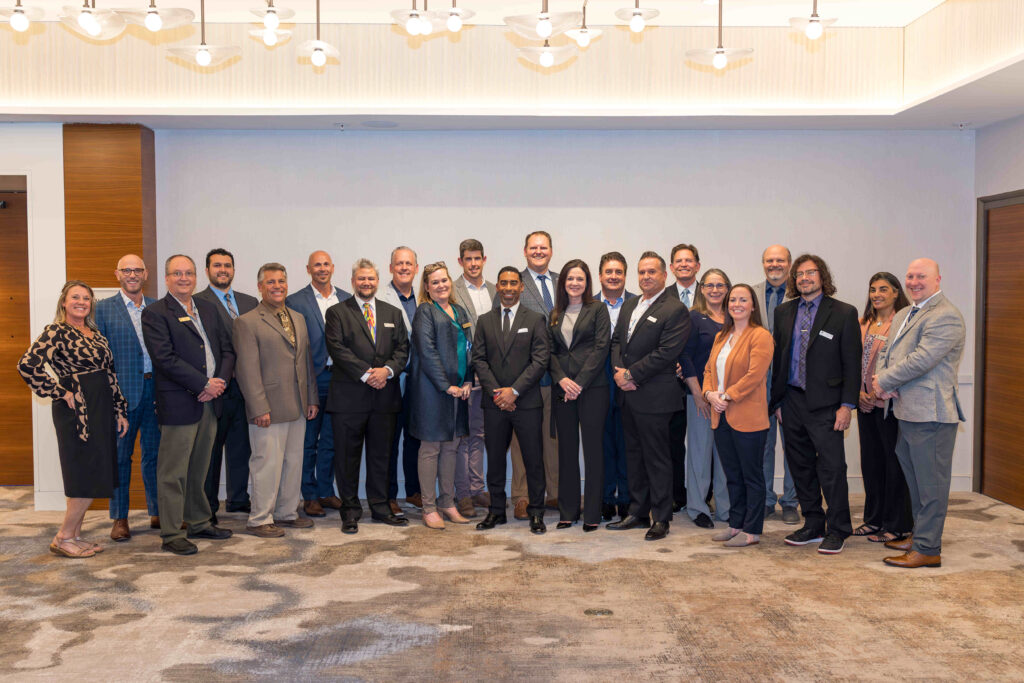
Share a piece of career advice:
We are our own limitations. Decide what you want in life, then go after it relentlessly.
One of the most valuable lessons I’ve learned is the importance of being intentional with your time and energy. It’s easy to get caught up in the pace of a demanding career, especially when you’re passionate about the work, but staying grounded requires more than just good time management. It takes self-awareness, clear priorities, and the ability to pause and reset when needed.
I often say my life runs on 15-minute calendar blocks, and while that’s partly a joke, it reflects how structured my days can be. What keeps me balanced is making space for the things that matter outside of work. Whether that’s volunteering with ACE Mentor program or Construction Management Association of America (CMAA), leading a Girl Scout troop, or spending time outdoors hiking, skiing or golfing. A fulfilling career isn’t just about what you accomplish professionally, it’s about how you stay connected to your values and your community along the way.
A fulfilling career isn’t just about what you accomplish professionally — it’s about how you stay connected to your values and your community.
The post People Spotlight: Meet Dana Peterson appeared first on Blog.
]]>The post Transitioning Australia’s energy system: Meet Kerim Mekki appeared first on Blog.
]]>Kerim brings more than 25 years of experience, a calm and grounded leadership style, and an eye for innovation — whether it’s navigating policy shifts or solving first-of-a-kind technical challenges.
What drew you into the renewable energy and storage space?
As a physicist, I appreciate the mathematical beauty of engineering. The Maxwell equations, they’re elegant. That’s what drew me in. It might be a bit of a French thing too, you don’t just look for function, you look for beauty.
I’ve always been interested in the stability of large systems, the kind of technical questions that sit right at the edge of physics and engineering. I earned a doctorate in transient stability of large power systems, essentially, how you model and understand what happens to country size grid in the milliseconds after a disturbance.
Over time, I could see that the biggest questions in the energy space were shifting. It wasn’t just about how to make the grid work better, it was about how to make it work differently. Renewables and storage fundamentally change the behaviour of power systems. So I made a deliberate move into this field… and I haven’t looked back.
What do you think sets Australia apart when it comes to delivering renewable energy projects?
Australia sometimes gets underestimated, but we shouldn’t be. Australian engineers are incredibly adaptable, especially those with backgrounds in mining and infrastructure.
That’s maybe the part that gets misunderstood: we have the capability here to deliver complex systems at large scale. We just don’t always communicate about it.
And the other thing? Scale.
In Australia, someone will say ‘we’re going to build a battery the size of an AFL field’ and no one blinks. In Europe, you’d spend ten years doing pilot projects first. Because of Australia’s mining experience, we’re used to building things fast, at massive scale, and just getting on with it and the issues as they emerge.
That kind of delivery mindset is powerful when you’re trying to lead the world in something.
How does AECOM play into that strength?
At AECOM, we have one of the strongest transmission and distribution teams in Australia and New Zealand, which is key, because battery storage isn’t just about the asset itself. It’s about how it integrates with the grid.
Not all the consultants have that deep capability. But we do, and we’ve proven it. Our work on Project EnergyConnect, VNI West and Central West Orana, shows the scale and complexity we can handle when integrating major transmission assets to the grid.
What excites you most about the future of energy?
To me, it’s simple, we’re about to rewrite the operating manual for the power grids.
For 200 years, power systems were built around rotating machines. Now, with renewables and storage, we’re entering the age of power electronics. It’s a completely different way of managing power, at a different time scale, and we get to help write the new rules.
It means rethinking everything, how we model systems, how we ensure stability, how we respond in milliseconds to change.
What advice would you give to young engineers entering the field?
First principles. Always.
You’ve got to be able to trace things back to the physics and the maths. You have to remember equations you studied, even if it was 25 years ago.
So learn it properly. And more importantly, remember it. That foundational knowledge will carry you a long way.
And finally, what do you do to recharge outside of work?
Cycling. I love getting out on the bike, but you won’t find any photos of me on Strava. I am old school and I don’t take my phone. It’s just about being in the moment. Same with engineering, sometimes you’ve got to put the distractions down and just focus on the road ahead.
I started riding in Tunisia, and in Grenoble where cycling is a big part of the culture. One of my favourite classic rides is Grenoble to Gap in the Alps, with decent elevation.
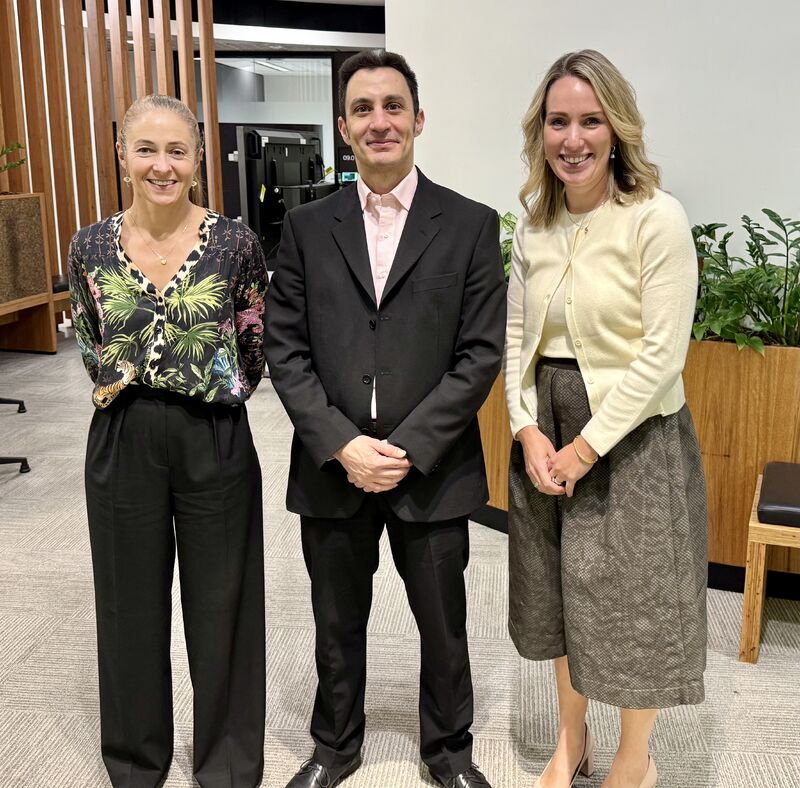

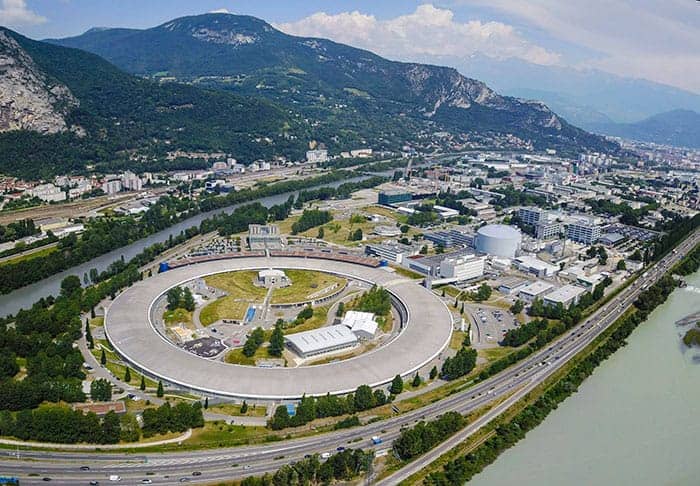
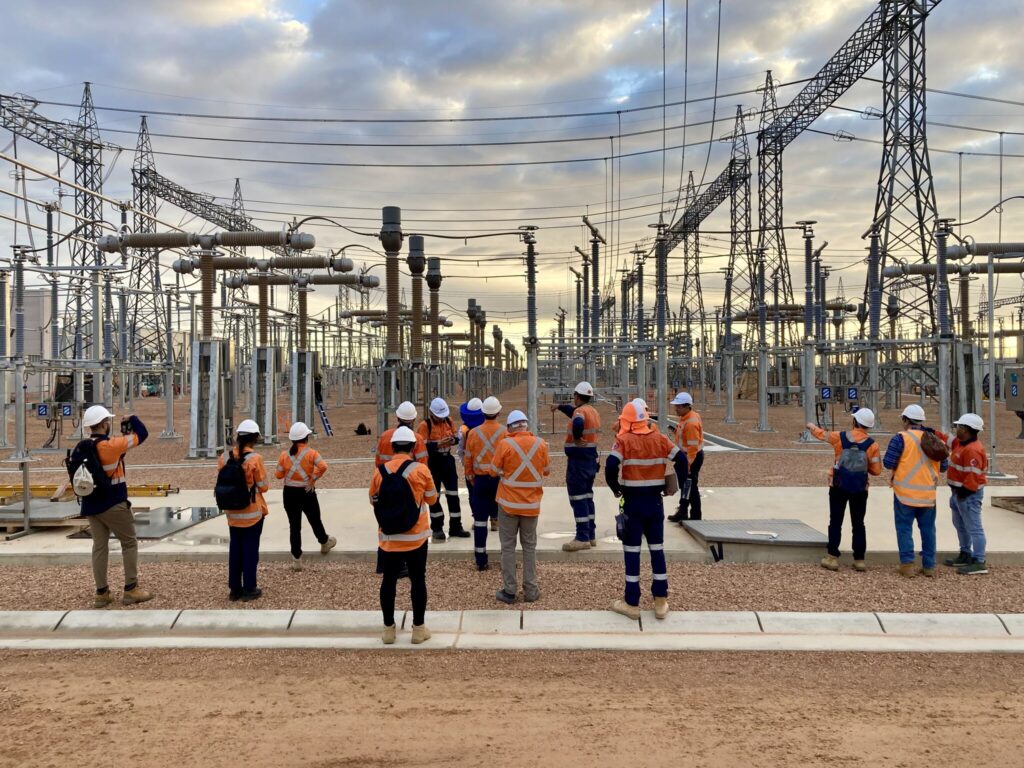
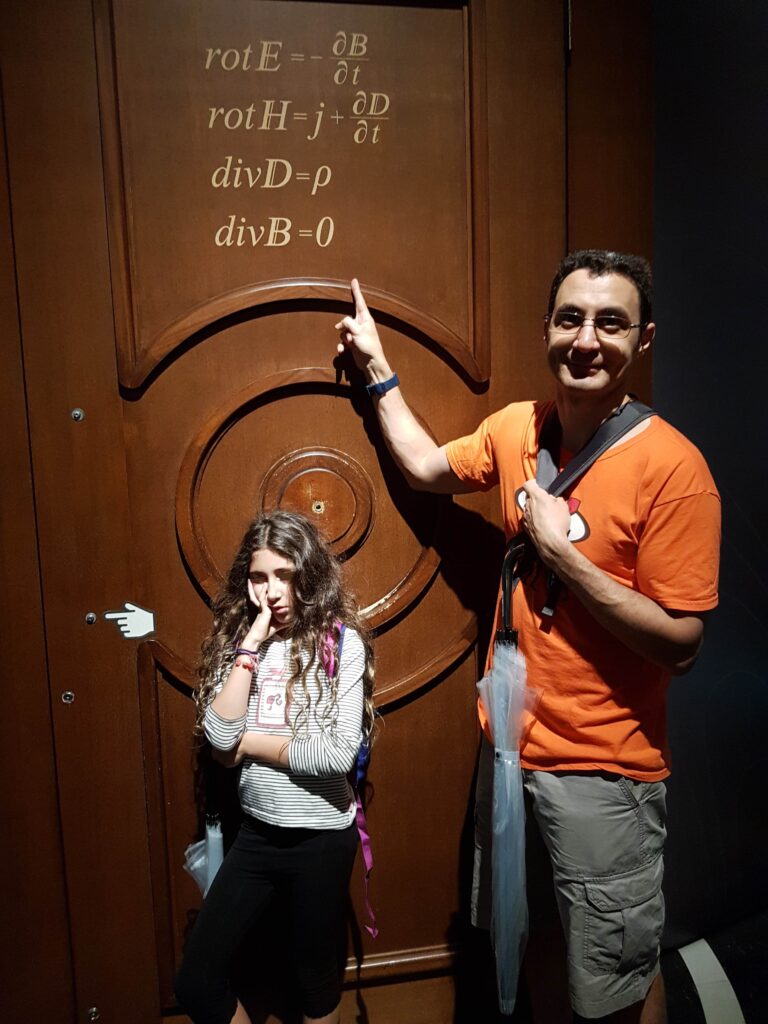
The post Transitioning Australia’s energy system: Meet Kerim Mekki appeared first on Blog.
]]>The post Powering Europe’s net zero future: Why pumped storage hydropower is vital appeared first on Blog.
]]>Pumped storage: Europe’s renewable battery
Europe increasingly relies on wind and solar power, but their intermittent nature brings significant challenges. A proven solution lies in pumped storage hydropower — a mature technology that effectively acts as a massive, rechargeable battery. PSH stores excess renewable energy by pumping water uphill, releasing it to generate electricity exactly when it’s needed, providing reliable, flexible power on demand.
Currently, Europe has around 55 gigawatts of pumped storage capacity. Yet, according to the Outlook, we must more than double this capacity by 2050 to reliably support the EU’s energy transition and achieve net zero (p. 24).
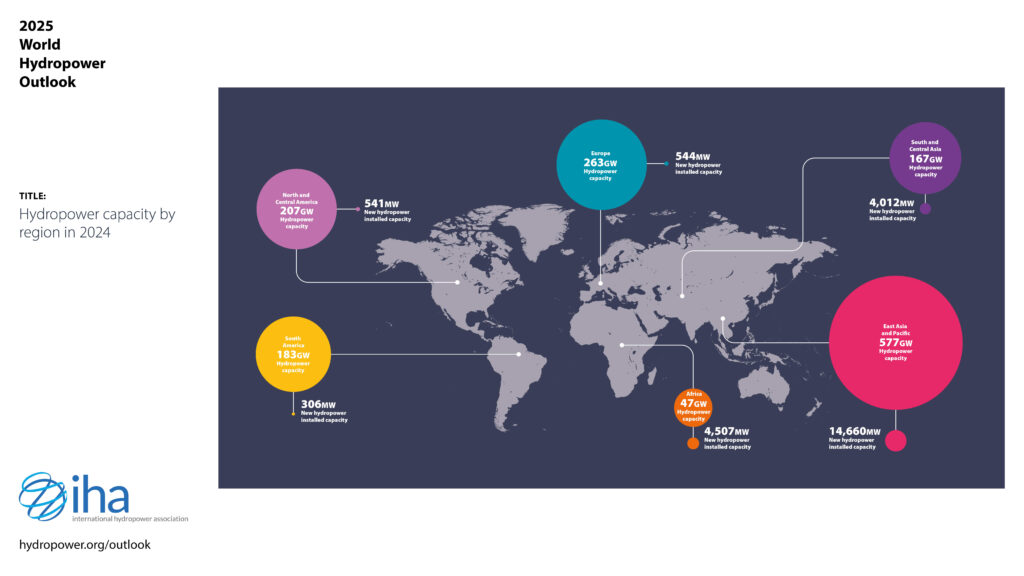
Tackling Europe’s ageing hydropower infrastructure
Europe faces an urgent infrastructure challenge: nearly 70 percent of our pumped storage facilities are over 40 years old. These ageing plants need significant modernisation to remain efficient and safe (p. 22). Upgrading existing facilities offers a practical, cost-effective, and rapid route to increasing renewable storage capacity compared to building entirely new plants.
This need for modernisation is also a chance to introduce digital technologies — such as artificial intelligence, more sophisticated predictive maintenance and improved remote monitoring — to boost operational efficiency and minimise down time.
Barriers to new pumped storage development
Despite strong support from developers and grid operators, Europe’s progress on new pumped storage hydropower projects remains slower than desired. High upfront investment — typically exceeding £1 billion per gigawatt of installed capacity — can discourage potential investors. Complex permitting processes, lengthy project timelines, construction risks, and limited availability of specialist contractors and equipment also hold back development.
The Outlook contrasts Europe’s slower pace with the rapid pumped storage growth seen in countries with centralised economies, such as China. However, positive policy changes are emerging. For instance, the UK’s introduction of a ‘cap and floor’ financial model seeks to strike a balance by giving investors greater certainty, while ensuring affordability for consumers and taxpayers.
Addressing these barriers will be crucial if Europe is to fully harness pumped storage’s potential for a secure, renewable energy future.
Sustainability is non-negotiable
The Outlook emphasises that Europe’s pumped storage expansion must prioritise sustainability. In a region where environmental regulations and public expectations are high, careful planning, rigorous environmental assessments, and meaningful engagement with local communities are crucial.
Digital innovation powering progress
Europe is uniquely placed to lead in hydropower digitalisation. The Outlook underscores the transformative impact of digital solutions on pumped storage facilities (p. 46). Digitalisation doesn’t just make pumped storage operations more efficient — it significantly reduces environmental impacts and operational costs.
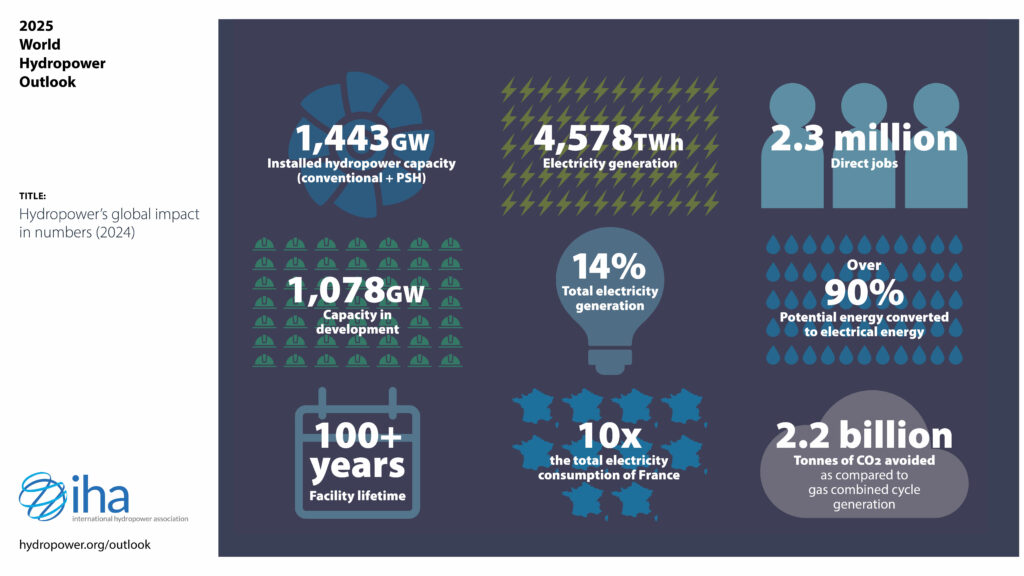
The question is pace
Across Europe, the need for grid-scale storage is widely recognised. The challenge isn’t awareness — it’s action. Governments and energy providers understand that without substantial investment in pumped storage, the transition to a low-carbon energy system won’t be achievable or reliable. The real question now is how quickly we can deliver the infrastructure needed to support it.
At AECOM, we’re committed to supporting this important transition. With our global expertise and local knowledge, combined with a focus on sustainability and innovation, we’re ready to help Europe accelerate the rollout of pumped storage.
Explore the full 2025 World Hydropower Outlook here.
The post Powering Europe’s net zero future: Why pumped storage hydropower is vital appeared first on Blog.
]]>